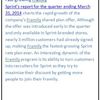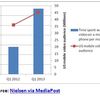By: Andy Porter, Product Manager in the Payment, Policy and Charging department at Alcatel-Lucent
The Economist has its famous Big Mac index for comparing buying power across countries. But I wanted an index that focuses on the cost of mobile data usage. That meant I had to find a data-charging equivalent of the Big Mac. I needed an item that crosses cultural boundaries, is universally understood and is available worldwide.
I considered many possibilities. But the answer arrived when I saw my daughter laughing at a video of a cat playing a piano. Obviously, the mobile data equivalent of the Big Mac is the YouTube video. It’s a universally available service that is easily measured in quantitative terms, making it ideal for comparing mobile data costs.
In honor of my daughter, I chose the classic “piano-playing cat” as the baseline video. And by the way, this cat video has been viewed over 34 million times, proving its suitability as a baseline.
How the index works
A typical YouTube video, delivered to a smartphone at high quality, requires about 2.3 Mb of data per minute. The piano-playing cat video is 55 seconds long, so it represents 2.1 Mb of data. Using that standard, I created the cat video index shown in Table 1. It compares the current worldwide costs of watching this cat video.
Table 1: How much it costs to watch the piano-playing cat (in US dollars)
As you can see, data costs vary widely around the world. The Danes pay the least to watch cat videos, despite their generally high cost of living. In Denmark, viewing the piano-playing cat 10 times costs only 4 cents. In the United States, you pay 31 cents for 10 views. And in the most expensive city, Seoul, the urge to watch this cute kitty costs you a whopping 41 cents for 10 views. That’s 9 times the cost in Denmark.
How can you use this index?
Your subscribers may be afraid of shocking surprises on their mobile data bill because they’re not really sure what a megabyte of data actually is — in terms of how they typically use their mobile devices. This index can help “translate” the costs of a typical service. That is, if video costs 4 cents for 10 minutes, then it is an affordable bit of fun.
With that in mind, the index can also be used as the basis for marketing campaigns, both positive and cautionary. In other words, this information can help you alleviate the fear of bill shock, as well as promote additional usage.
For more ideas on how you might use this down-to-earth view of data usage costs to promote data usage, take a look at Daisy Su’s blog “10 offers for driving mobile data growth,” as well as “Young Consumers Drive Mobile Data Growth.” You’ll learn more about driving monetization of the data network. These steps can include new ways to encourage groups of subscribers to use data to create a shared experience based on their interests. Or you might simply inspire a spur-of-the-moment viewing of a cat playing the piano.












